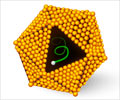A molecular switch appears to be a common feature in the development of fatty liver disease, say scientists.

"We haven't entirely solved it yet, but we've seen that a lower abundance of TBL1 is common to multiple mouse models," said Stephan Herzig of DKFZ-ZMBH Alliance in Germany.
"Most importantly, in human livers, the more fat there is the lower this transcriptional co-factor," he said.
In the new study, Herzig's team went in search of components of that regulatory machinery that might be important in the case of fatty liver disease, a condition that is tightly associated with several components of metabolic syndrome, including diabetes and heart disease.
"Fatty liver may be one reason for the further development of insulin resistance. It appears to contribute to some of the long-term complications and is an independent risk factor for cardiovascular complications," said Herzig.
The researchers looked to mice with fatty liver disease of various genetic or dietary causes. In every case, those mice also showed impaired activity of TBL1 in the liver.
Advertisement
In human patients, TBL1 levels were also inversely related to the amount of fat in an individual's liver. In other words, as TBL1 levels go down, it appears that liver fat levels go up.
Advertisement
Source-ANI















